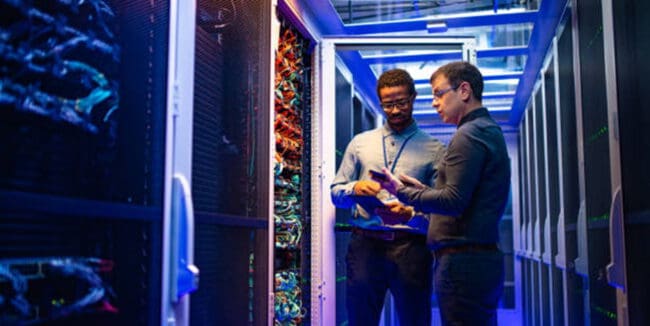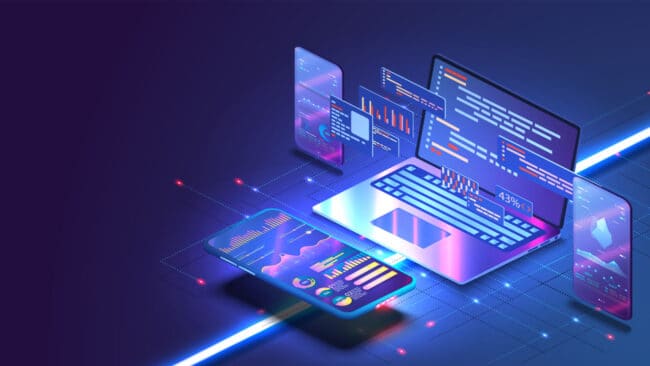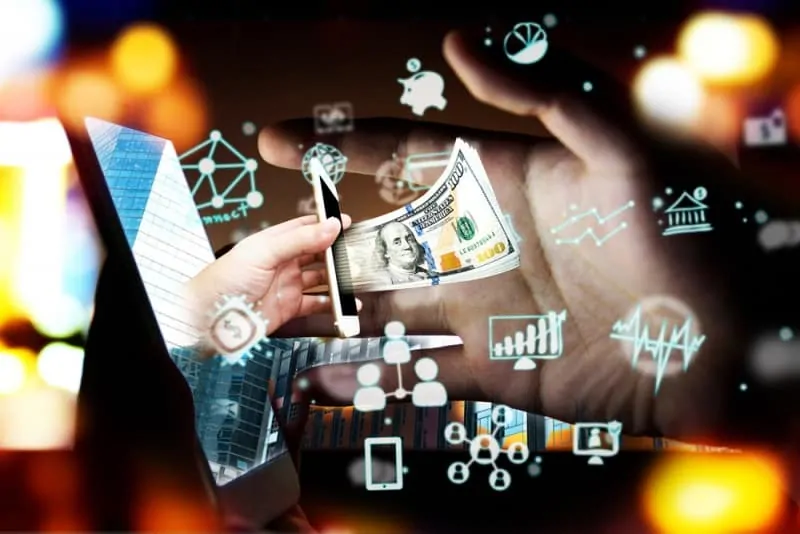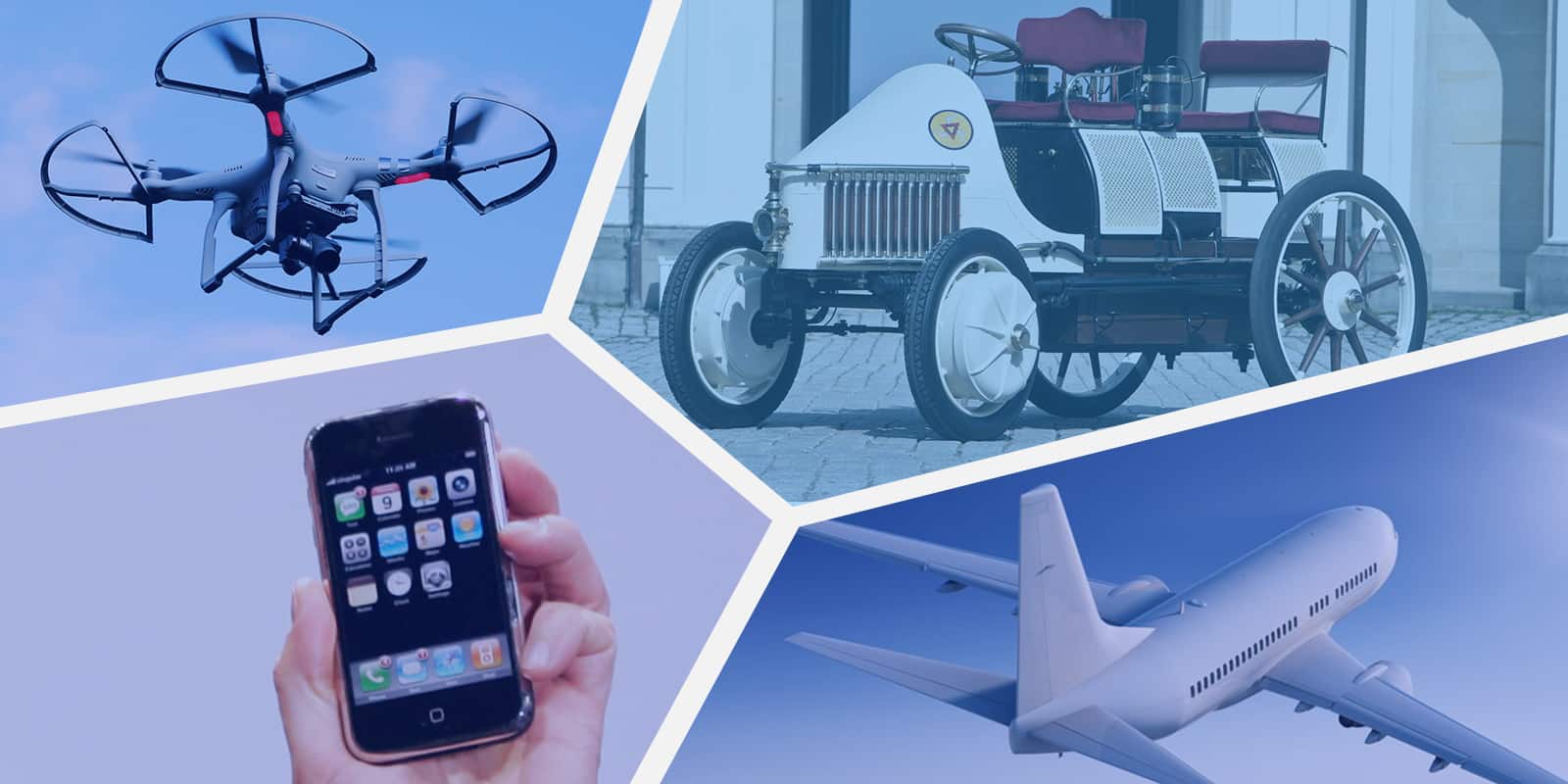The history of technology can be traced back to the origins of human civilization. Over time, technological innovations have allowed humans to achieve feats that were once impossible, including travelling to outer space and developing powerful computers.
The first examples of technology were the simple tools used by early humans, such as spears and knives for hunting, fishing nets, and baskets for gathering food. With these tools, early humans were able to improve their ability to survive and thrive. As human civilizations developed, new technologies were created in order to meet their needs. For example, ancient Egyptians invented irrigation systems to help them grow crops in dry desert conditions; meanwhile, Chinese inventors created gunpowder and fireworks during the late Tang Dynasty period (618-907 AD).
In more recent times, key technological advances include electricity (1880s), automobiles (1885), aircraft (1903), television (1936), computers (1950s) and the internet (1990s). Each of these inventions has transformed society in multiple ways – from making everyday tasks easier or faster to connecting people across the globe like never before. Today’s world would look very different without these transformative technologies!
How did humans develop technology?
In order to answer this question, we must first define what is meant by technology. Technology can be broadly defined as the application of knowledge for practical purposes. This can include everything from primitive tools used for hunting and gathering, to the most sophisticated machines and gadgets that are used in modern society.
The origins of human technology can be traced back hundreds of thousands of years ago to the first time our ancestors began using simple tools to make their lives easier. Over time, they continued to develop new technologies, including weapons, agriculture, transportation systems and more.
One of the key factors that has driven technological innovation throughout history is competition between different civilizations or groups of people. When one group develops a new technology that gives them an advantage over their rivals, it often triggers a race to see who can come up with even more advanced ways of doing things. This has led to some remarkable breakthroughs over the years – such as when humans first started using fire for cooking and heating; when they invented the wheel; or when they developed antibiotics and other medical treatments.
One thing worth noting is that many great inventions were not originally intended for use in everyday life – but rather were created for military purposes or simply as experiments with no real-world applications in mind! The microwave oven was invented during World War II by scientists who were trying to find a way to heat food quickly so soldiers could have something hot to eat on the battlefield; while both Google Chrome and Microsoft Windows were initially designed as operating systems for computers used in classrooms and laboratories respectively.

What are some early examples of technology?
There are many early examples of technology, however a few notable examples include:
-The invention of the printing press by Johannes Gutenberg in the 15th century which allowed for books to be mass produced.
-The creation of the steam engine by James Watt in 1781 which led to the development of technologies such as locomotives and steamships.
-Alexander Graham Bell’s invention of the telephone in 1876 which paved the way for modern telecommunications.
How has technology evolved over time?
For centuries, technology has been evolving at an alarming rate. Each new invention and discovery has led to radical changes in the way humans live and work. The following is a brief timeline of some key technological advancements that have shaped our world today:
1400 BC – First known use of the wheel
100 AD – Watermill invented
400 AD – Stirrup created, which leads to development of the cavalry
710 AD- Papermaking introduced to Europe from China
1025 – Printing press invented by Chinese engineer Bi Sheng
1206 – Gunpowder first used in battle by Song Dynasty Chinese against Jurchen invaders
1346 – Mechanical clock developed in Europe
1543 – Telescope invented by Hans Lippershey
1608- Microscope invented by Galileo Galilei 1620- Barometer created by Evangelista Torricelli 1642- Telescope lens made from a single piece of glass using gravity molding process patented by Johannes Hevelius 1709 – Steam engine developed Robert Fulton 1830s – Telegraph & Morse code developed Samuel Morse 1876- Telephone patented Alexander Graham Bell 1920s & 1930s Radio & Television broadcast commercially audio recordings Mickey Mouse copyrighted 1938 Nuclear fission discovered Werner Heisenberg 1945 Atomic bomb dropped on Hiroshima John Bardeen (co-inventor of transistor) awarded Nobel prize for physics 1951 Computer ENIAC announced Atanasoff–Berry computer recognized as first electronic digital computer 1957 Space Race begins with launch Sputnik 1 Yuri Gagarin becomes first man in space 1989 World Wide Web proposed Tim Berners Lee 1990 JavaScript programming language released Netscape Navigator browser released

What are some major technological advances in history?
There are many technological advances in history that have shaped the world today. Some of the most notable ones are listed below:
The printing press- The printing press was invented by Johannes Gutenberg in 1439 and allowed for books to be printed en masse, which made them more affordable and available to a wider audience. This invention had a large impact on education and literacy rates throughout Europe.
The telephone- The telephone was invented by Alexander Graham Bell in 1876 and revolutionized communication by allowing people to talk to each other remotely. It has since been adapted for use in a variety of different ways, such as fax machines, caller ID, and conference calls.
The computer- The first working computer was created by Charles Babbage in 1822 but it wasn’t until 1936 that John Atanasoff developed the electronic programmable computer. However, it wasn’t until 1951 that Von Neumann architecture became popularized computers as we know them today. These advancements led to huge changes in how businesses operated and changed how humans interacted with information.
What are the benefits of technology?
There are many benefits to using technology in the classroom. Some of these include:
– Making learning more fun and engaging
– Helping students learn at their own pace
– Enhancing collaboration among students
– Increasing student motivation and engagement
How has technology changed over time?
The invention of the printing press in the fifteenth century had a huge impact on communication and technology. The ability to print books, pamphlets, and newspapers allowed information to be spread more rapidly and effectively than ever before. This led to technological advancements such as Johannes Gutenberg’s movable type printing press in 1439, which made it easier to produce books with quality text.
In 1624, Frenchman Blaise Pascal invented the mechanical calculator, which could add, subtract, multiply, and divide. In 1876 Alexander Graham Bell patented the telephone; two years later he demonstrated it at the Centennial Exhibition in Philadelphia. The telephone quickly became popular across America and soon people were using it for business transactions and personal conversations. In 1937 J D Wilkinson developed a method of manufacturing an electronic tube called a triode valve that could amplify weak electrical signals. This led to further development of radios, televisions sets, amplifiers etc.
In 1941 John Atanasoff and Clifford Berry developed the first electronic computer – known as Atanasoff-Berry Computer (ABC). However this machine was not actually built until 1973 after their work had been disputed by other scientists. In 1945 John von Neumann proposed that computers should use a ‘stored program’ where instructions for carrying out logic operations are stored inside the computer memory just like data items allowing them to be executed again as needed – this is now known as Von Neumann architecture1 After World War II ended many former German scientists came over to America bringing with them knowledge of advanced computing techniques which helped spur on growth in this area during the 1950s including development of FORTRAN (1955), COBOL (1959)and BASIC (1964). By 1965 computers were becoming widely available with DEC selling their PDP-8 mini computer for $18K.
1 https://enwikipediaorg/wiki/John_von_Neumann
How do people use technology in their daily lives?
There is no single answer to this question as people use technology in different ways depending on their needs and preferences. However, some of the most common ways that people use technology in their daily lives are by using smartphones and other mobile devices, checking email and social media accounts, watching TV and streaming videos, playing video games, and using the internet for shopping or researching topics.
Smartphones are incredibly versatile devices that can be used for a variety of tasks such as making calls, sending texts or emails, browsing the internet, using social media apps, listening to music or podcasts, taking photos or videos, tracking workouts or running routes, reading books or magazines, navigating maps or directions etc. In fact according to a study done by Pew Research Center in 2018*, 78% of Americans report that they own a smartphone which shows how ubiquitous these devices have become. Many people now consider their smartphones to be an essential part of their lives and rely on them for a wide range of activities both personal and professional.
Another popular way that people use technology in their daily lives is by checking email and social media accounts. Email has been around since the early days of the internet but it’s still one of the most commonly used forms of communication today. Similarly with social media platforms like Facebook (which has over 2 billion active users), Twitter (which has over 330 million active users), LinkedIn (which has over 500 million active users), Instagram (which has over 1 billion active users) etc., they have become an important way for individuals to stay connected with friends and family as well as keep up with current events happening around the world. According to a study done by Reuters Institute Digital News Report 2019**, 47% percentof American survey respondents said they check Facebook once per day while 26% check Twitter once per day indicating just how widely these platforms are used.
People also watch TV and stream videos online regularly as a means of entertainment or news consumption. According to eMarketer***, total US
What effects has technology had on society and the environment?
In the early days of humanity, people were nomadic, living in small clans that moved around to find food and shelter. Technology has had a profound effect on society by allowing for the growth of cities and the development of civilizations. Today, most people are no longer nomadic but rather live in large population centers where technology is used to support an immense variety of functions, from communication and transportation to manufacturing and healthcare.
Technology can also be credited with helping us become more environmentally responsible. For instance, through technological advances we have been able to create more energy-efficient devices as well as develop alternative sources of energy such as solar and wind power. Additionally, online tools allow individuals to communicate with each other about ways they can reduce their environmental impact.

What is the difference between current and future technology?
Advances in technology are constantly changing and evolving. The fundamental difference between current and future technology is the rapid pace of change that seems to be constantly accelerating. With each new development, society faces both opportunities and challenges that need to be addressed.
In terms of specific examples, some areas where there is a significant gap between current and future technology include: computing power, data storage capacity, energy usage/efficiency, artificial intelligence (AI), communication speed/bandwidth, as well as many others. In general however, the following can be said about the key differences between today’s technology and tomorrow’s:
– Computing Power: Future devices will have much more powerful processors due to advances in photonics (integration of optical fiber with electronic circuits) and quantum computing which will result in faster speeds, better performance & efficiency while using less energy. For example, IBM has already demonstrated a 5 qubit quantum computer which is relatively small but packs considerable computational power; they predict commercial versions with 50-100 qubits within 10 years.
– Data Storage Capacity: Memory chips are getting smaller while increasing their storage capacity at an astonishing rate (Moore’s law). Hard drives are also slowly being replaced by SSDs (solid state drives) which use no moving parts making them far more durable & require less power resulting in longer battery life for laptops & other mobile devices; larger scale “cold storage” using holographic data media offers virtually unlimited archival space at very low cost per terabyte.
– Energy Usage/Efficiency: breakthroughs are being made all the time in improving energy efficiency across all types of electronics from CPUs to LED lighting; projected EU targets for 2020 call for 30% reduction below 2009 levels – this sort of aggressive goal setting needs to happen globally if we’re going to meet the UN’s Sustainable Development Goals target of halving global greenhouse gas emissions by 2030 relative to 2010 levels! While lithium ion batteries remain dominant currently(promising up to 4
How has technology affected the way we live our lives?
How Technology Affects Our Lives
There is no question that technology has had a profound effect on the way we live our lives. Perhaps the most noticeable change has been in the area of communication. With tools like email, text messages and social media, we can now communicate with people all over the world instantly and at little cost. This has made it possible for us to stay connected with friends and family even when they are far away.
Technology has also had a big impact on the workplace. In particular, it has made it easier for people to work from home or anywhere else they happen to be. Additionally, technology has allowed businesses to operate more efficiently by automating tasks that used to require human labor. Thishas led to increased productivity and reduced costs for companies.
Finally, technology has played a major role in improving our health care system. For example, through innovations such as telemedicine, doctors are now able treat patients remotely using video conferencing software. This allows patients to get treatment without having to travel long distances or wait in long hospital lines
What does the future of technology look like?
In the field of technology, we can expect to see more artificial intelligence (AI) and machine learning developments. We will also see new ways for people to interact with technology, including voice recognition and gesture control. Technology will become more portable, with smaller devices that are easier to carry around. There will also be advancements in data storage, allowing us to store more information in a smaller space. Finally, we can expect to see improvements in security and privacy protection methods.
What impact has new technologies had on businesses?
technology has had a huge impact on businesses. here are some examples:
1. technology has made it possible for businesses to operate from anywhere in the world. this has led to an increase in international trade and more companies doing business online.
2. technology has made it easier for businesses to communicate with customers and employees. this has resulted in faster customer service and increased efficiency among employees.
3. technology has made it easier for businesses to track sales and inventory. this allows businesses to make better decisions about what products to sell and how much inventory they need to keep on hand.
Has society become too reliant on technology?
There are pros and cons to both viewpoints on this controversial topic.
On one side, some people argue that society has become too reliant on technology. They contend that advances in technology have led to a decline in social skills and manners, as well as an increase in obesity, depression and anxiety disorders due to excessive screen time.
They believe that humans are losing their ability to interact face-to-face with others and are instead relying too much on the internet, smartphones and other forms of technology for communication. This is causing people to be more isolated from each other than ever before.
Others argue that society couldn’t function without technology today. They say that many advancements in science and medicine would not be possible without modern technology tools such as computers and laboratory equipment. They also maintain that technological devices help us stay connected with others around the world, which can lead to new friendships and business opportunities.
How has technology changed the way we live?
Technology has undeniably changed the way we live. It has made our lives easier in so many ways, from making it simpler to connect with others to providing us with information at our fingertips. Some of the most notable changes that have come about as a result of technology are:
– We can now communicate instantly with people all over the world through social media and other online platforms. This means we can stay in touch with loved ones no matter where they are, and easily make new friends from anywhere in the world.
– We now have access to an endless amount of information online. This means we can learn anything we want without having to leave home, and can find solutions to any problem quickly and efficiently.
– Technology has allowed us to become more efficient in almost every aspect of our lives. For example, by using smart devices like phones and tablets, we can now control appliances and other electronics around our homes without ever having to get up off the couch!
What are some advantages and disadvantages of technological advances?
Technological advances have both advantages and disadvantages. Some of the advantages include that technology makes it easier to connect with people from all over the world, it can make tasks quicker and easier to complete, and it can provide entertainment. Some of the disadvantages include that technology can be addictive and distracting, it can lead to health problems if used excessively, and it can be harmful to the environment.
What effects has technology had on society as a whole?
Technology has made a significant impact on society as a whole. It has allowed for the globalization of economies and cultures, it has given people access to information and resources that they would not have otherwise had, and it has made communication among people easier than ever before.
One of the most significant impacts of technology on society is the way that it has globalized economies and cultures. With technologies like the internet and cell phones, people are able to connect with each other from all over the world in ways that were not possible before. This allows for people to share ideas and learn about new cultures, which can help to break down barriers between different groups of people.
Technology also gives people access to information and resources that they would not have otherwise had. For example, thanks to the internet, someone in a small town in Africa can research any topic they want or purchase goods from anywhere in the world. This helps to level out disparities between different parts of the world by giving everyone access to the same resources.
Finally, technology makes communication among people easier than ever before. With tools like email, text messaging, social media platforms, etc., people can communicate with each other instantaneously regardless of where they are located physically
Is there such thing as too much technology in our lives?
There is no doubt that technology has become an intricate and indispensable part of our lives. We rely on it for just about everything – from communicating with others, to getting around town, to working. However, there is such a thing as too much technology in our lives.
Too much screen time can be bad for us both mentally and physically. According to the American Academy of Pediatrics, children under 2 years old should not have any screen time at all, and those aged 3-5 should only have up to 1 hour per day. The longer we spend looking at screens – whether it’s a TV, computer monitor, phone or tablet – the more likely we are to suffer from eye strain, headaches and fatigue. In addition, excessive screen time has been linked with issues such as obesity, poor sleep habits and attention deficit disorder (ADD).
On the physical side of things, spending too much time online can lead to repetitive stress injuries like carpal tunnel syndrome. Our bodies weren’t designed to sit in one position for hours on end typing away at a keyboard or swiping through screens; doing so can cause pain in our neck muscles, shoulders and wrists.


COMMENTS